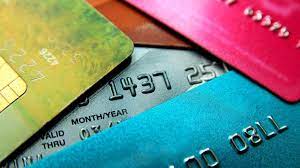Post the dot-com bubble, the internet has played a pivotal role and is a great equalizer. Online business and different eCommerce operations have exhibited an escalation owing to the digital paradigm shift. This, in turn, has resulted in a corresponding exponential increase in the use of different digital modes of payment. The pandemic situation has also augmented the reliance on the online contactless mode of payment. To name a few convenient methods of contactless payments, they are as follows: Debit/Credit Cards, Internet Banking, Unified Payment Interface (UPI) service, Mobile Wallets, Mobile Banking, etc.
Now, payment, in a way, is a focal point for any business, as no payment implies no revenue. The challenge lies in choosing the most appropriate means and medium to accept online payment using credit cards. To zero down the most convenient payment processor is another herculean task altogether. With respect to credit cards arises a grave concern of obtaining a merchant account.
What is a Merchant Account? How does it work?
A business bank account that allows merchants to accept credit card payments is a merchant account. One needs to be cautious with the fees that are attached to the merchant account, as at times, it might not be very explicit.
The transaction follows a sequential process that starts with the customer purchasing either a product or service and ends with transferring money from the payment processor to the business account. However, the process seems simple yet is time-consuming. Let us take an example of an online purchase.
Step 1: Initially, the consumer places an order on the online store.
Step 2: The online order information is collected, encrypted, and transferred to the credit card processor.
Step 3: Next comes the card network where the transaction information is sent, which is further routed to the customer’s issuing bank.
Step 4: Upon validation of the card and account by the bank, the card processor is requested to perform the required transaction.
Step 5: The debit or credit card processor then sends a response to the shopping cart.
Step 6: The final step is where the customer and merchant receives a message of either a successful or failed transaction.
For the entire process, the time taking aspect is the transfer of funds from the merchant account to the business bank account, which usually takes somewhere between two days to two weeks.
Make credit card payments without having a merchant account
To avoid the cumbersome and lengthy process of getting the payment via a merchant account, here is a list of alternatives you could opt for.
- Understand the concept of Payment Aggregator/Merchant Aggregator/Third-party Payment Service Providers (PSPs)
An intermediary or a payment aggregator can help you make credit card payments even more conveniently. Payment Service Providers (PSPs) make the entire transaction process a lot easier as it collects the payment from the customers in an escrow account on behalf of the merchant. It allows the business to focus on developing its products or services while it processes the entire amount owed.
When you choose a payment aggregator, always explore the security aspect, limitation of the maximum amount of a credit card, the convenience offered for both clients and merchants.
- Perform a comparative analysis of the available options for third party merchants
Don’t make any haste while choosing one option from the many available. Make sure you always analyze the pros and cons while using a third-party merchant. Consider factors such as the methods of payment accepted along with the servicing and fees involved with third-party merchants. The different costs such as transaction fees, reserve percentage should be considered cautiously.
- Transaction fee
It is charged on every completed transaction. Some of the third-party merchants charge a relatively lower per-transaction fee over the percentage fee. One should very well evaluate the transaction fee and choose the most affordable one.
- Reserve percentage
This is a provision to safeguard any returned item or chargebacks that might happen in case of any reversed transaction. Few third-party merchants might impose a 5-10% temporary hold on the transaction revenue.
Increasing Credit Card Payments and the Importance of Data Security
In context to online transactions, data security is a major concern for all its users. The usage of credit cards has also increased; data suggests that credit card transactions observed a rise of 33% in August 2021 vis a vis August 2020. This acceleration in demand requires the protection of consumer data.
Zaakpay has paid utmost attention to preventing any malware, data breaches and unauthorized access. Thus, data security is a factor that differentiates it from already existing payment gateways. It is a modern payment gateway that is based on leading new-age technology. The components that help add to its credibility and reliability include tokenization and PCI DSS compliance.
Over to you
The ultimate goal for any business is customer satisfaction which can be magnified with quality and convenience. Choosing the right payment gateway is crucial and lifeblood for any online business. One of the most apt solutions to avoid using merchant accounts is third-party gateways. However, they might not offer an advanced version of tools and services but provide a fast and secure platform. As people showcase certain levels of reluctance towards digital payments, gaining trust acts as a differentiating factor. The merchants can easily manage the transactions on their mobile devices. Zaakpay is the brand you can easily trust with the secured encryption algorithm it adopts. All the transactions here are well scrutinized before the final settlement. It is undoubtedly the brand that is here to stay as one of India’s leading payment gateway service providers.
